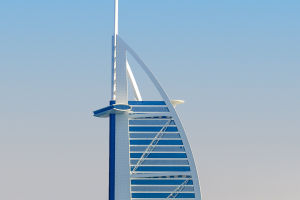The rapid development of urbanization has brought two conflicting results to cities.
1.The number of cities has increased dramatically, the scale of cities has expanded, the functions of cities have become more and more complicated, the distinction between individual cities has become more and more blurred, and cities have become more and more homogeneous and unrecognizable.
2.The city competition intensifies, city identification and city marketing become more and more important.
That is, cities need to be more "eye-catching" than before, more need to distinguish each other, cities increasingly call for individuality.
How to make a city stand out among many cities has become a real problem that cannot be avoided in city management and administration.
However, with the rapid development of cities, the concept of "urban landmark" is also changing quietly.
Urban culture is the soul of a city, and urban characteristics are the symbol of urban culture, and only a city with cultural characteristics has charm.
The reshaping of urban cultural characteristics lies firstly in the excavation and recognition of urban cultural characteristics, secondly in the protection and inheritance of urban cultural characteristics, and on this basis the development and creation of urban cultural characteristics.
There are many countries with representative architecture in the world, perhaps many people have not heard of the country, but know the characteristic architecture of the country.
1.London's most representative building - St. Paul's Cathedral, which was designed by British architect Sir Christopher Wren.
St. Paul's Cathedral is located at the top of Ludgate Hill, the highest point in the city of London, and its famous dome is one of the largest in the world, nearly 112 meters high.
The cathedral took 10 years to complete in design alone, and 40 years to actually construct.
Since its completion, St. Paul's has become an integral part of London life.
2.The Leaning Tower of Pisa is one of the most famous buildings in Europe.
Known worldwide for its leaning appearance, the tower's construction began in 1173 and lasted for over 300 years.
During the construction process, the tower began to tilt because the land on one side was too soft to support the weight of the building.
3.The Colosseum, an oval-shaped amphitheater located in the center of Rome, is considered one of the greatest architectural feats of the ancient Romans.
The stadium had a capacity of 50,000 spectators and was mainly used for gladiatorial competitions.
Built of concrete and stone, construction of the Colosseum began around 72 AD and was completed in 80 AD.
The design and shape of the Colosseum has been a source of inspiration for many modern stadium designs.
Today, it is still one of the most popular tourist attractions in Rome, attracting thousands of visitors every year.
4.Barcelona is a famous tourist mecca and you will be attracted by some unusual architecture in this city. An architect named Antoni Gaudi, who created an almost grotesque and unique style, brings people a unique feast of architectural vision. When you walk through the streets of Barcelona, you can visually recognize Gaudi's architecture.
5.The Sydney Opera House is widely regarded as one of the greatest architectural works of the 20th century.
This beautiful building consists of three interlocking sets of shells with two main performance halls and a restaurant.
As a masterpiece of modern architecture, the Opera House has become a landmark of Sydney and Australia.


